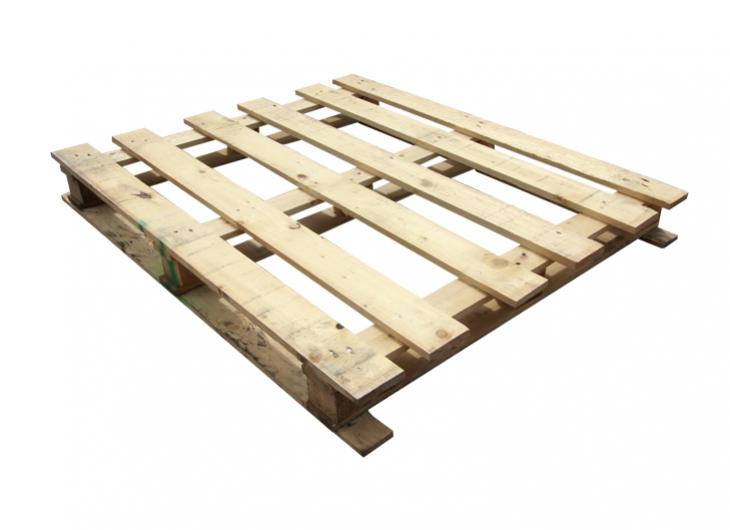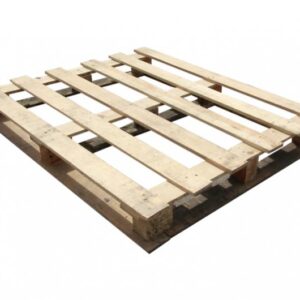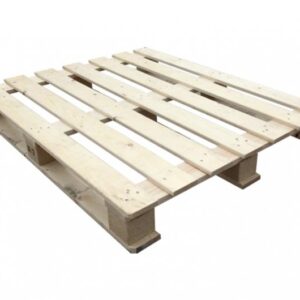Unlock Your Warehouse Potential: Discover the Magic of the Conversion Wing Pallet (1200 x 1000 mm)
Ever feel like your warehouse space is a puzzle with missing pieces? Are you wrestling with inefficient storage, awkward product handling, or the constant battle against wasted space? If so, you’re not alone. Many businesses face these challenges daily, and it can feel like an uphill battle to optimize every inch. But what if I told you there’s a solution that can dramatically improve your workflow, boost your efficiency, and even save you money?
Enter the Conversion Wing Pallet (1200 x 1000 mm). This isn’t just another piece of warehouse equipment; it’s a smart, adaptable tool designed to revolutionize how you store, move, and manage your goods. Forget rigid, one-size-fits-all solutions. The Conversion Wing Pallet is here to offer flexibility, better space utilization, and a smoother operational experience.
Let’s dive deep into what makes this particular pallet size so special and why you should seriously consider integrating it into your logistics strategy.
The Problem with Conventional Pallets
Before we sing the praises of the Conversion Wing Pallet, let’s briefly touch upon why traditional pallet solutions can sometimes fall short. You’ve probably seen them: the standard 1200 x 800 mm (often called a Euro pallet) or the 1200 x 1000 mm (GMA pallet). While widely used, they have limitations.
- Fixed Dimensions: Their fixed sizes mean you’re often working within a pre-defined box. If your products don’t fit perfectly, you end up with wasted space on the pallet or the need for extra packaging, adding costs and complexity.
- Handling Inefficiencies: Depending on your racking systems and forklifts, certain pallet sizes might not be ideal. This can lead to slower loading and unloading times and increased risk of damage.
- Storage Space Underutilization: When products are smaller than the pallet footprint, you’re effectively paying to store air. This is a recurring cost that can add up significantly over time.
Introducing the Conversion Wing Pallet (1200 x 1000 mm)
Now, let’s talk about the star of the show: the Conversion Wing Pallet in the 1200 x 1000 mm dimension. This size offers a fantastic balance of surface area and compatibility, but it’s the “conversion” aspect that truly sets it apart. While the base dimensions are a generous 1200 mm by 1000 mm, these pallets are designed with unique features that allow them to adapt to different storage and transport needs.
When we talk about “conversion,” we’re often referring to features that allow for:
- Adjustable Sides or Wings: Some designs incorporate fold-down, extendable, or removable sides that can be configured to cradle specific products more securely, effectively reducing wasted space and improving load stability.
- Compatibility with Different Racking: The “wing” aspect can also refer to how the pallet integrates with racking systems, potentially allowing for easier entry, exit, or even a more compact fit in certain configurations.
- Integrated Dunnage or Securing Mechanisms: While not always a direct part of the “wing” definition, conversion pallets often come with features to help secure items, reducing the need for secondary packaging.
Why 1200 x 1000 mm is a Sweet Spot
The 1200 x 1000 mm (often referred to as an Australian pallet or a half pallet in some contexts, though the dimensions are distinct) is a popular choice for a reason. It provides a larger surface area than the standard Euro pallet, making it ideal for:
- Bulky or Wider Products: If your items tend to be on the wider side, this pallet offers ample space without excessive overhang.
- Multiple Smaller Items: You can often fit more individual units onto this larger surface, leading to fewer pallets to manage overall.
- Specific Industry Standards: Certain industries have adopted the 1200 x 1000 mm as a de facto standard, making it easier for inbound and outbound logistics if your partners also use this size.
Now, imagine this generous surface area combined with the adaptable “conversion” features. That’s where the real magic happens.
The Benefits You Can’t Ignore
Let’s break down the tangible advantages of adopting the Conversion Wing Pallet (1200 x 1000 mm):
1. Enhanced Space Utilization
This is arguably the biggest win. Traditional pallets can leave significant gaps when storing items that don’t perfectly fill the surface. The “conversion” features, such as fold-away sides or integrated cradles, allow you to:
- Reduce Empty Space: By fitting your products snugly, you minimize wasted space on the pallet.
- Increase Pallet Density: This means you can fit more product per pallet, leading to fewer pallets in your warehouse.
| Feature | Standard Pallet (1200×1000 mm) | Conversion Wing Pallet (1200×1000 mm) |
|---|---|---|
| Max Product Fit | Limited by fixed pallet dimensions. | Can be adjusted/optimized to fit a wider range of product shapes and sizes more closely. |
| Wasted Space Per Pallet | Potentially higher if products are smaller than the pallet. | Significantly reduced due to customizable fit. |
| Storage Efficiency | Moderate. | High, as each pallet is optimized for its load. |
2. Improved Product Security and Reduced Damage
Loose or poorly secured items on a standard pallet are an accident waiting to happen. The conversion features can:
- Cradle and Stabilize: Adjustable sides can prevent items from shifting during transit or handling.
- Eliminate the Need for Excessive Packaging: By providing built-in containment, you might reduce your reliance on shrink wrap, banding, or void fill, saving on packaging materials and labor.
- Minimize Product-on-Product Impact: A well-secured load is less likely to suffer damage from items moving into each other.
3. Increased Handling Efficiency
The design of these pallets can also contribute to smoother operations:
- Easier Loading and Unloading: Depending on the specific design, the wings might facilitate easier forklift entry or provide a more stable platform for manual loading.
- Better In-Racking Fit: Some conversion designs are optimized to work seamlessly with various racking systems, potentially leading to faster put-away and retrieval times.
- Reduced Need for Re-palletizing: If your products can be loaded directly onto a conversion pallet and remain secure, you eliminate a step in the process.
4. Cost Savings
The cumulative effect of better space utilization, reduced packaging, and improved efficiency translates directly into cost savings:
- Reduced Storage Fees: Less wasted space means you might need less warehouse footprint, or you can store more goods in your existing space.
- Lower Packaging Costs: Significant savings on materials and labor.
- Reduced Product Loss: Fewer damaged goods mean less write-off and fewer customer complaints.
- Increased Throughput: Faster handling means more orders processed in the same amount of time.
5. Enhanced Sustainability
By optimizing space and reducing packaging, you’re also making a more environmentally conscious choice. Less material used, less air shipped, and potentially fewer transport movements all contribute to a greener operation.
Who Can Benefit Most?
The Conversion Wing Pallet (1200 x 1000 mm) isn’t for everyone, but it’s particularly beneficial for businesses dealing with:
- E-commerce Fulfillment: Handling a wide variety of SKUs, many of which might not be perfectly rectangular and can lead to wasted space on standard pallets.
- Manufacturing: Transporting components or finished goods that have irregular shapes or require secure containment.
- Retail Distribution: Moving a diverse range of products from distribution centers to stores.
- Industries with Standardized Pallet Requirements: Where the 1200 x 1000 mm base is a common size, but internal efficiency needs improvement.
- Companies Focused on Lean Operations: Businesses looking to eliminate waste in every aspect of their supply chain.
Comparing Conversion Pallet Features
It’s important to note that “Conversion Wing Pallet” can encompass a few different designs. Here’s a look at some common features you might find and what they offer:
| Feature Type | Description | Benefits | Potential Drawbacks |
|---|---|---|---|
| Fold-Down Sides | Pallet has rigid sides that can be folded down flat for shipping or storage when empty, or folded up to contain goods. | Excellent product containment, reduces need for secondary packaging, good stacking when empty. | Can be heavier, might not be ideal for very tall or oddly shaped items. |
| Adjustable/Removable Dividers | Pallet features slots or mechanisms to insert and adjust dividers to create custom compartments. | Highly customizable for various product sizes, good for separating different items. | Can be more complex to set up, dividers might get lost. |
| Integrated Corner Posts | Pallet has built-in posts that extend upwards to create a frame, often with mesh or canvas sides. | Robust containment, good for taller items, can be stacked securely. | Can be bulkier when empty, might not fit all racking systems. |
| Specialized Cradling | Pallet has molded or designed indentations to cradle specific product shapes. | Perfect for oddly shaped items, maximum security and space efficiency for targeted products. | Less versatile if product range changes frequently. |
When choosing a Conversion Wing Pallet, consider the specific types of products you handle most frequently and your existing warehouse infrastructure.
Making the Switch: What to Consider
Switching to a new pallet system is a strategic decision. Here are a few things to think about:
- Product Analysis: Understand the dimensions, weight, and fragility of the products you typically ship. This will dictate the best type of conversion feature.
- Warehouse Infrastructure: Do your racking systems, conveyor belts, and forklifts support the chosen pallet size and any potential protrusions from the “wings”?
- Supplier Collaboration: If you’re receiving goods on pallets, can your suppliers accommodate your new pallet type, or will you need a system for transferring goods?
- Cost-Benefit Analysis: Conduct a thorough analysis comparing the upfront cost of the conversion pallets against the projected savings in space, packaging, and labor.
- Trial Period: If possible, start with a smaller trial order to test the effectiveness of the conversion pallets in a real-world scenario before committing to a large purchase.
Frequently Asked Questions (FAQ)
Q1: Are Conversion Wing Pallets significantly more expensive than standard pallets?
A: Generally, yes, they have a higher upfront cost due to their more complex design and features. However, the return on investment through improved space utilization, reduced packaging, and increased efficiency often makes them more cost-effective in the long run.
Q2: How durable are Conversion Wing Pallets?
A: Durability varies based on the material (plastic or wood) and the specific design. High-quality conversion pallets are built for industrial use and can be very robust, often outlasting standard wooden pallets.
Q3: Can Conversion Wing Pallets be stacked when empty?
A: This depends on the design. Many conversion pallets, especially those with fold-down sides, are designed to nest or stack efficiently when empty, maximizing space during return trips or storage.
Q4: Will this pallet size fit in standard shipping containers?
A: A 1200 x 1000 mm pallet is generally compatible with standard shipping containers, particularly 40-foot containers. However, the “wing” features might slightly affect how many you can fit compared to a basic pallet, so it’s worth verifying optimal loading patterns.
Q5: I have a lot of irregularly shaped items. Is this the best solution?
A: This is where conversion pallets truly shine. The ability to adjust, cradle, or secure items more effectively makes them an excellent choice for irregular shapes, significantly reducing the wasted space and instability often associated with them on standard pallets.
Q6: What materials are Conversion Wing Pallets typically made from?
A: They are commonly made from durable plastics (like HDPE or PP) or treated hardwoods, similar to standard pallets. Plastic tends to be lighter, more hygienic, and resistant to moisture and pests, while wood may offer a lower initial cost.
The Takeaway: Invest in Smart Storage
The Conversion Wing Pallet in the 1200 x 1000 mm dimension is more than just a platform; it’s a strategic tool to help you gain control over your warehouse operations. By offering enhanced flexibility, superior space utilization, and improved product security, it empowers you to store more, handle goods more efficiently, and ultimately, save money.
If you’re tired of the limitations of conventional pallets and are looking for a way to unlock your warehouse’s full potential, it’s time to explore the world of Conversion Wing Pallets. You might be surprised at how much difference a smarter pallet can make!



Reviews
There are no reviews yet.